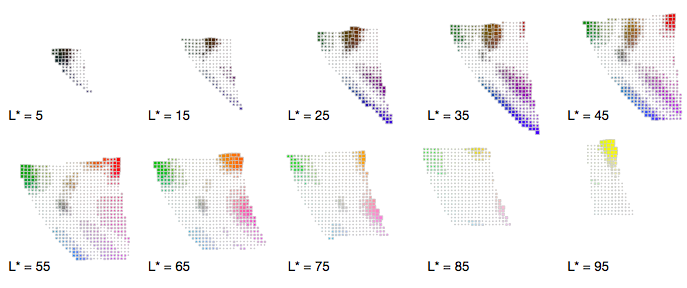UW Interactive Data Lab
papers

Color Naming Models for Color Selection, Image Editing and Palette Design
Proc. ACM Human Factors in Computing Systems (CHI), 2012

Abstract
Our ability to reliably name colors provides a link between visual perception and symbolic cognition. In this paper, we investigate how a statistical model of color naming can enable user interfaces to meaningfully mimic this link and support novel interactions. We present a method for constructing a probabilistic model of color naming from a large, unconstrained set of human color name judgments. We describe how the model can be used to map between colors and names and define metrics for color saliency (how reliably a color is named) and color name distance (the similarity between colors based on naming patterns). We then present a series of applications that demonstrate how color naming models can enhance graphical interfaces: a color dictionary & thesaurus, name-based pixel selection methods for image editing, and evaluation aids for color palette design.
BibTeX
@inproceedings{2012-color-naming-models,
title = {Color Naming Models for Color Selection, Image Editing and Palette Design},
author = {Heer, Jeffrey AND Stone, Maureen},
booktitle = {Proc. ACM Human Factors in Computing Systems (CHI)},
year = {2012},
url = {https://idl.uw.edu/papers/color-naming-models},
doi = {10.1145/2207676.2208547}
}
